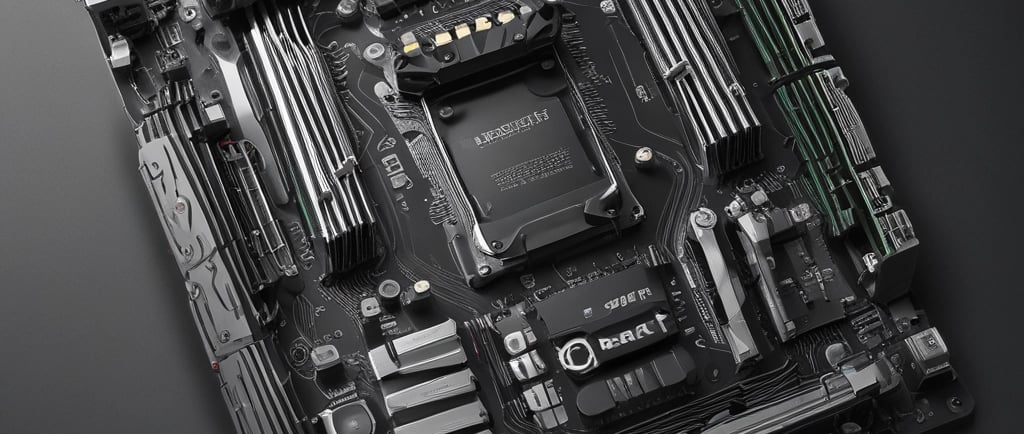Beyond Speed: Why the Latest RAM is a Game Changer
Sushil Rawal


For decades, the story of RAM (Random Access Memory) has been a simple one: more speed, more better. We chased higher MHz and lower CAS latencies, and that was that. But the landscape is shifting. The latest generation of RAM is undergoing a fundamental transformation, moving beyond raw frequency to redefine its role in modern computing. We're not just getting faster RAM; we're getting smarter RAM.
Welcome to the era of DDR5, and the even more futuristic CAMM2. Let's break down what makes this new memory so revolutionary.
DDR5: The New King is Here
DDR5 is no longer a niche product for extreme overclockers; it's the mainstream standard for new PCs, from Intel's 12th Gen and up to AMD's Ryzen 7000 and newer platforms. While it starts at a baseline speed of 4800MT/s (millions of transfers per second)—already faster than most DDR4—its real innovations are under the hood.
1. Dual 32-bit Sub-Channels: Efficiency is Key
The biggest architectural change in DDR5 is its move to two independent 32-bit data channels per module. Think of it like turning a single-lane highway (DDR4's 64-bit channel) into two dedicated, narrower lanes. This allows two data streams to happen simultaneously, drastically improving efficiency for many smaller tasks and reducing bottlenecks. For the CPU, this means it can communicate with the RAM more effectively, leading to smoother performance, especially in productivity applications and gaming.
2. Integrated Power Management (PMIC)
Previously, the motherboard's voltage regulation modules (VRMs) solely managed power delivery to the RAM. DDR5 changes this by placing a tiny, sophisticated Power Management Integrated Circuit (PMIC) directly on the memory module itself. This allows for more stable and cleaner power, which is crucial for achieving those blisteringly high speeds (now commonly available at 6000MT/s, 7200MT/s, and beyond) and improving overclocking potential. It's like giving each RAM stick its own dedicated power supply.
3. Higher Densities and Speeds
DDR5 is built for the future. We're already seeing single modules with 48GB and 96GB capacities, making 192GB of RAM on a four-slot motherboard a consumer reality. This is a boon for content creators, data scientists, and anyone running virtual machines. Combined with speeds that are pushing past the 8000MT/s mark for enthusiasts, DDR5 is built to handle the massive data demands of tomorrow's applications.
The Rise of CAMM2: The Laptop Savior
While DDR5 dominates the desktop, a new form factor is set to revolutionize laptops and compact workstations: CAMM2 (Compression Attached Memory Module).
For years, laptops have used SODIMM sticks, which are limited in speed and capacity due to their physical design. CAMM2 is a flat, thin module that sits flush against the motherboard. Its advantages are immense:
Higher Performance: It supports much faster memory standards, crucial for powering next-generation AI PCs and mobile workstations.
Space Efficiency: Its slim profile allows for thinner laptop designs or leaves more room for larger batteries and cooling systems.
Capacity: It can support higher densities in a single module, making 64GB or even 128GB in a sleek laptop far more feasible.
CAMM2, recently standardized by JEDEC, is set to replace SODIMMs in high-performance laptops, starting with models from Dell, Lenovo, and others. It’s the biggest physical change to laptop memory in over 25 years.
What Does This Mean for You?
For Gamers: The sweet spot for DDR5 gaming has firmly settled around 6000MT/s to 7200MT/s with low latencies. This combination provides a tangible boost in average frame rates and, more importantly, a significant improvement in 1% lows—making gameplay feel much smoother and eliminating stutters.
For Creators & Professionals: If you work with massive video files, complex 3D models, or large datasets, DDR5's higher bandwidth and massive capacity are a game-changer. Rendering times decrease, and applications run more responsively when you're not bottlenecked by memory.
For the Everyday User: The benefits are more subtle but present. A faster, more efficient RAM standard contributes to a snappier overall system, quicker application load times, and better future-proofing for the operating systems and software of tomorrow.
The Bottom Line
The latest RAM is more than just a spec sheet upgrade. DDR5's architectural changes and CAMM2's innovative design represent a necessary evolution to keep pace with incredibly powerful CPUs and data-hungry applications like AI. We've moved from a one-dimensional race for speed to a multi-faceted pursuit of efficiency, capacity, and intelligent design.
When building or buying your next PC, paying attention to your RAM choice is more critical than ever. You're not just buying speed; you're investing in the foundational technology that enables everything else to run at its best. The future of memory is here, and it's smarter than you think.